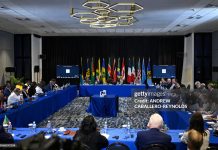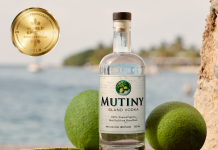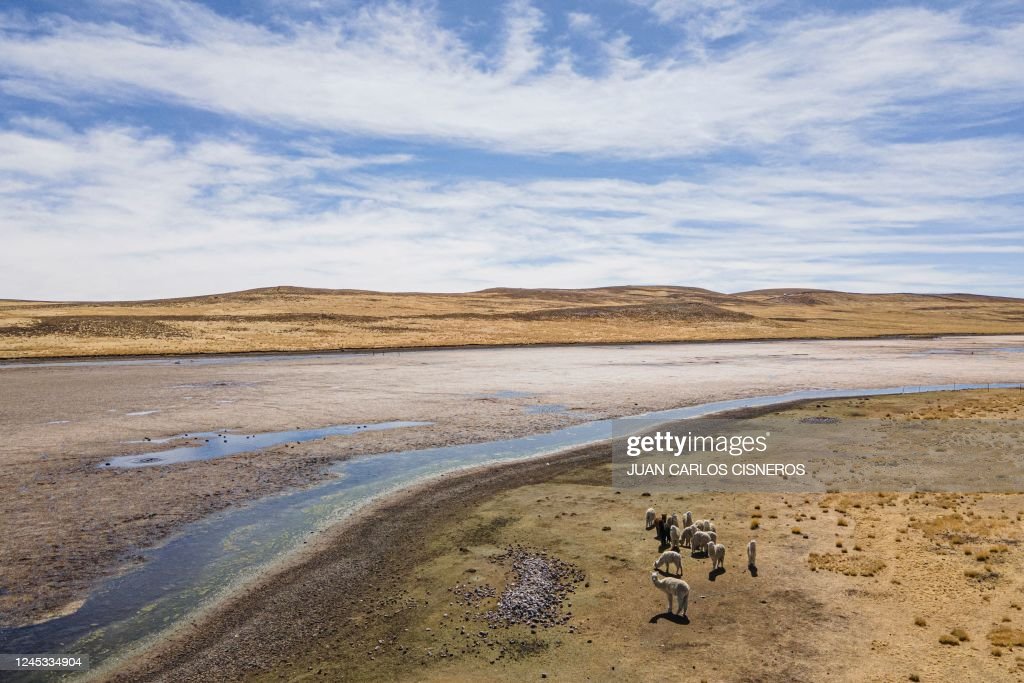NEWS AMERICAS, LIMA, Peru, Tues. Dec. 13, 2022: Peru has another new president, and, as in so many places in the world, climate change is impacting the weather as well. Perhaps the worst impact in Peru is drought. This is encouraging those who produce food to find innovative ways to reduce water use. When done right, these innovations can reduce costs and increase output. The result: Higher incomes and a catalyst to sustainable development.
World Neighbors is working with remote communities in the Andes, where the seasons alternate between heavy rain and long dry periods—both of which have been intensified with climate change. Integrated aquaculture-agriculture is providing an answer.
First, rainwater is captured using zinc tanks and plastic gutters, and stored in ponds lined with plastic. The ponds are used to grow freshwater fish, with fingerlings bought from Ayacucho.
Fishmeal, normally the biggest expense for small-scale fish farmers, is provided using a sustainable process that makes use of food waste. Food leftovers and vegetable leaves are composted with black soldier fly larvae. The larvae feed on the waste and also produce enzymes that kill off harmful bacteria. Once the larvae enter the pupal stage, they are collected, dehydrated – using a solar dehydrator – then crushed and separated into protein and oil. This is mixed with corn flour to make high-protein fishmeal.
The composted food waste is used to feed chickens while ammonia-rich wastewater from the ponds is piped into a grow bed. There it enters 50-gallon half-barrels containing gravel or volcanic pebbles. The process oxidizes the fish waste into nitrites and nitrates as fertilizer for growing lettuce, spinach, tomatoes and peppers in the grow bed. Even the fish bones are ground to add calcium to the chickens’ diet.
The entire process is nearly entirely self-contained, with “waste” used as inputs. This dramatically lower costs and raises profit margins when surplus fish is sold in local markets.
Farmers in Peru share these innovations through farmer field schools. In these schools farmers exchange practical information, learn new skills and collaborate on additional innovations to lower costs and increase output.
In Peru’s Amazon, World Neighbors is working with farmers to use these techniques to grow tilapia, which is already established in the region. Farmers are also looking at arapaima (arapaima gigas), also known as paiche. This is the largest scaled fish in the Amazon region, growing up to nearly 10 feet in length. Its flesh can be salted and preserved, and it is described as “the cod of the Amazon.” But over-fishing has depleted wild stocks. Using aquaculture techniques, arapaima can be market-ready in one year. In addition, arapaima commands a good price in international markets, potentially opening the door for family farmers to export their surplus output.
The sustainable approach makes sense for small farmers in Peru and other countries. But larger producers should take note too. According to World Neighbors CEO Kate Schecter, “I think they (larger producers) could learn a lot. One of the main things is the organic nature of it. There are fewer inputs, it is less expensive, and it is much healthier for the environment, and good for the consumer.”










